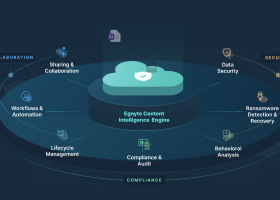Electronic Consent: Definition and How It Works
Electronic consent offers benefits that traditional paper-based consenting does not. These benefits are driving many in the clinical research community to invest in the systems and processes required to support electronic consent.

Transitioning from paper-based to electronic consent is more than deploying a mechanism that confirms who the person is and that they agree to the terms. For clinical research and trials, electronic consent must mirror paper requirements.
Consent requires information disclosure, voluntary participation, and informed decision-making (i.e., three core elements in research ever since the adoption of the Declaration of Helsinki in 1964). Electronic consent incorporates a process of information exchange between sponsor and subjects that includes:
- Providing subject recruitment materials
- Verbal instructions
- Question and answer sessions
- Time for the patient to thoroughly review the form
- Assessment of the subject understanding
- Signing the electronic consent form
What Is Electronic Consent?
Electronic consent (eConsent), also known as electronic informed consent (eIC), is a system that obtains informed consent from a research subject or their legally authorized representative (LAR) using electronic-based processes and systems. The information is presented via computers, tablets, websites, smartphones rather than on paper. The digital format makes it easier to educate subjects about the study using a variety of media, such as text, graphics, audio, video, podcasts, and passive and interactive websites.
Key features of electronic consent forms and systems include:
- Ability to access the forms from nearly anywhere at any time
- Collaboration and interoperability capabilities
- Customizable forms that can include hyperlinks, videos, spoken text, and games to help give patients a clear understanding of the study protocol
- Integration of social media platforms and online support groups
- Remote monitoring
- Standardized procedures that may decrease the need for staff training across multiple sites
Benefits of Electronic Consent for Subjects
- Convenience of not having to go to a research site
- Ability to review the consent form without feeling pressure to sign right away
- Opportunity to be better informed
- Option to review supplemental information
Benefits of Electronic Consent for Sponsors
- Ability to manage documents electronically
- Capability to handle a larger subject base and more types of research
- Convenience of not having in-person appointments
- Enhanced subject engagement and compliance
- Higher enrollment
- No travel reimbursement
- Reduced regulatory compliance risks, delays, and costs
- True informed consent
Types of Electronic Consent
When providing consent online, there are a number of ways in which an e-signature might be documented. Some examples include:
- Electronic document signed with a stylus
- E-signature services
- Scanned handwritten signature
- Subject- (or LAR-) typed name with affirmative acknowledgment of a statement that their intent is for this to act as a legal signature (e.g., “By checking this box and typing my name below, I am electronically signing this consent form.”)
Facilitating Understanding for Electronic Consent
To meet legal and ethical requirements, facilitating understanding for electronic consent is a key part of the process. As mentioned above, this is far more than obtaining a signature. Electronic consent requires that subjects fully comprehend the study and give informed consent rather than simply submitting a signature or checking a box.
Facilitating an understanding for electronic consent involves presenting the information in a language understandable to the subject and at a reading level the subject can understand. In addition, scientific and medical terms need to be explained in layman’s terms.
There are many options for how to present the information. Offering subjects a variety of ways to review and understand the information has proven to be very effective—especially with complex, technical topics. Text-heavy documents are supplemented with multimedia, including videos, podcasts, graphics, and interactive, game-like programs.
Answering Subject Questions
An important part of the consent process, for paper-based or electronic consent, is ensuring that subjects are given an opportunity to ask questions. Through this process, subjects are able to discuss potential risks, alternatives, and further treatments. This can be conducted in several ways via electronic consent, including:
- Electronic messaging
- Telephone calls
- Video conferencing
- Live chat with a remotely located investigator or study personnel from a confidential space at home
Verifying Identity for Electronic Consent
The Office for Human Research Protections (OHRP) and the Food and Drug Administration (FDA) regulations permit the use of electronic signatures when written informed consent is required.
The OHRP permits electronic signatures if such signatures are legally valid within the jurisdiction where the research is to be conducted.
FDA 21 CFR part 11 permits various methods to create electronic signatures, including computer-readable ID cards, biometrics, digital signatures, and username and password combinations. The FDA does not mandate or specify any particular methods for electronic signatures.
Institutional Review Boards (IRBs) or Ethics Committees (ECs) are responsible for ensuring the integrity of the informed consent document.
An example of an online identity verification process is outlined below.
- 1. The subject goes to the website or app of the company, organization, or institution.
- 2. They accept the use of the camera and microphone to verify their identity on recorded video.
- 3. The subject shows a valid ID document (e.g., driver’s license, passport), and the ID is verified.
- 4. They put their face in clear view of the camera.
- 5. If necessary, a team of qualified agents validates the video in a separate process.
- 6. The subject’s identity is verified. The recorded video with their ID document, the picture of their face, and the proof of validation of the email and telephone serve as proof that they are who they say they are.
Regulations and Electronic Consent
- Title 21 of the Code of Federal Regulations Parts 11, 50, and 56
- 21 CFR Part 11—electronic signatures must be trustworthy, reliable, and generally equivalent to paper records
- 21 CFR Part 50—obtain the legally effective informed consent of the subject or the subject's legally authorized representative (LAR)
- 21 CFR Part 56—Institutional Review Board (IRB) that reviews clinical investigations
- Health Insurance Portability and Accountability Act (HIPAA)
- Secure sensitive protected health information (PHI) and personally identifiable health information (PII) to keep it from disclosure without the subject’s consent or knowledge
- Establish national standards for processing electronic healthcare transactions
- Title 45 of the Code of Federal Regulations Part 46 Subpart A (45 CFR Part 46, A, also known as The Common Rule)
- Specifies how research that involves human subjects is to be conducted and reviewed
- Outlines the criteria and mechanisms for institutional review board (IRB) to audit human subjects research
- Protects the subjects’ rights and interests
- International Conference on Harmonization – Good Clinical Practice (ICH-GCP)
- Provides guidelines for establishing electronic consent
- Ensures the subjects’ willingness to participate in a study being informed of all relevant aspects of the trial
Streamlines Clinical Studies and Protects Subjects
Medical guidelines in the Nuremberg Code and later the Declaration of Helsinki established ethical guidelines for subjects’ informed consent, which became a mandatory part of the research protocols. Electronic consent follows the same rules, but modernizes implementation processes.
With electronic consent, all subjects in trials are afforded the same access to information and the secure storage of all their personal data. Electronic consent for studies is considered safe and effective in protecting subjects’ rights and streamlining study onboarding and related processes.
Egnyte has experts ready to answer your questions. For more than a decade, Egnyte has helped more than 16,000 customers with millions of customers worldwide.
Last Updated: 6th November, 2021




